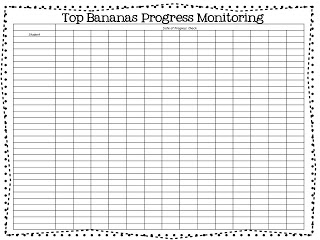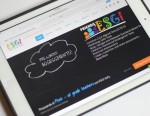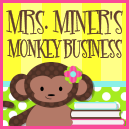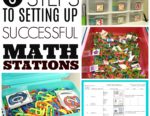Before I tell you how I assess these areas. I think it’s important to note that everyone has their own way of assessing their students, keeping track of their data and how they use that data to form groups. If you’re struggling with your ‘system’ please check out Richardson’s chapter 2. It has some great suggestions. For myself, I need a system that is quick, accessible and easy. In my classroom, things are constantly moving and grooving. So I have developed my own system for assessing and pacing not only my common core standards:
 |
| Editable Common Core Check-list/Pacing Guide |
but also a system for assessing most of the areas that Richardson suggests. While my common core standards hang from two different clipboards in my classroom for easy access. My assessments for literacy are housed in a small three ring binder and in there I can put my spread sheets for letter recognition, sounds, sight word fluency . . . you name it. It’s my reference ‘bible’ for planning instruction and grouping my students.
From this information, you can make your groupings for literacy/guided reading…I want to reiterate one thing at this point and that is…grouping is not meant to pigeon-hole students into a certain ‘group.’ Consider how Differentiated Instruction regards flexible grouping:
Make sure you check back for next week’s chapter 3. I hope to have a few goodies ready for you by then. You know…a spoonful of sugar and all that.
Now make sure you check out all the other contributors and followers in the book study by heading over to see Mary at Sharing Kindergarten.


















Hi Marsha, I’m your newest follower AND I get to meet you in person on Saturday! I am checking out everyone’s blog to get a little background on them first! Did you know you were being stalked? ha ha! See you on Saturday!
Patty
Second In Line
I liked what you shared about this assessment chapter. I have always dreaded testing. I want to teach. I do understand the importance of assessment though and found your ideas helpful.
HI Marsha! I just happened on to your website and saw you were involved in an online book study. I would be interested in joining. What site had chapter one and where can I find the details of the study? Thanks!
Hi Marsha,
LOVE hearing about be ongoing assessment in your classroom. I certainly aspire to assessing several times a week but do not know how to fit it in without compromising instructional time. I do not have the assistance of an instructional aisle in my classroom. Any suggestions as to how to fit it in? I would love to hear from you.
Gina
Gina.scalf@comcast.net
Ooo…sorry about the lack of proof reading of my comment. Of course I meant to say that I don’t have an instructional aide in my classroom (not aisle) and I love hearing about the ongoing assessment (not be).
This post was so detailed and helpful. Thanks! I think teachers everywhere are trying to figure out how to assess quicker and more often, and you gave a lot of great ideas. I’m going to be teaching kindergarten next year, so I appreciated you sharing how you assess these young learners. Everything is just a little different for kindergarten since many aren’t reading and writing yet. Thanks again!
-Amanda
Teacher at the Wheel